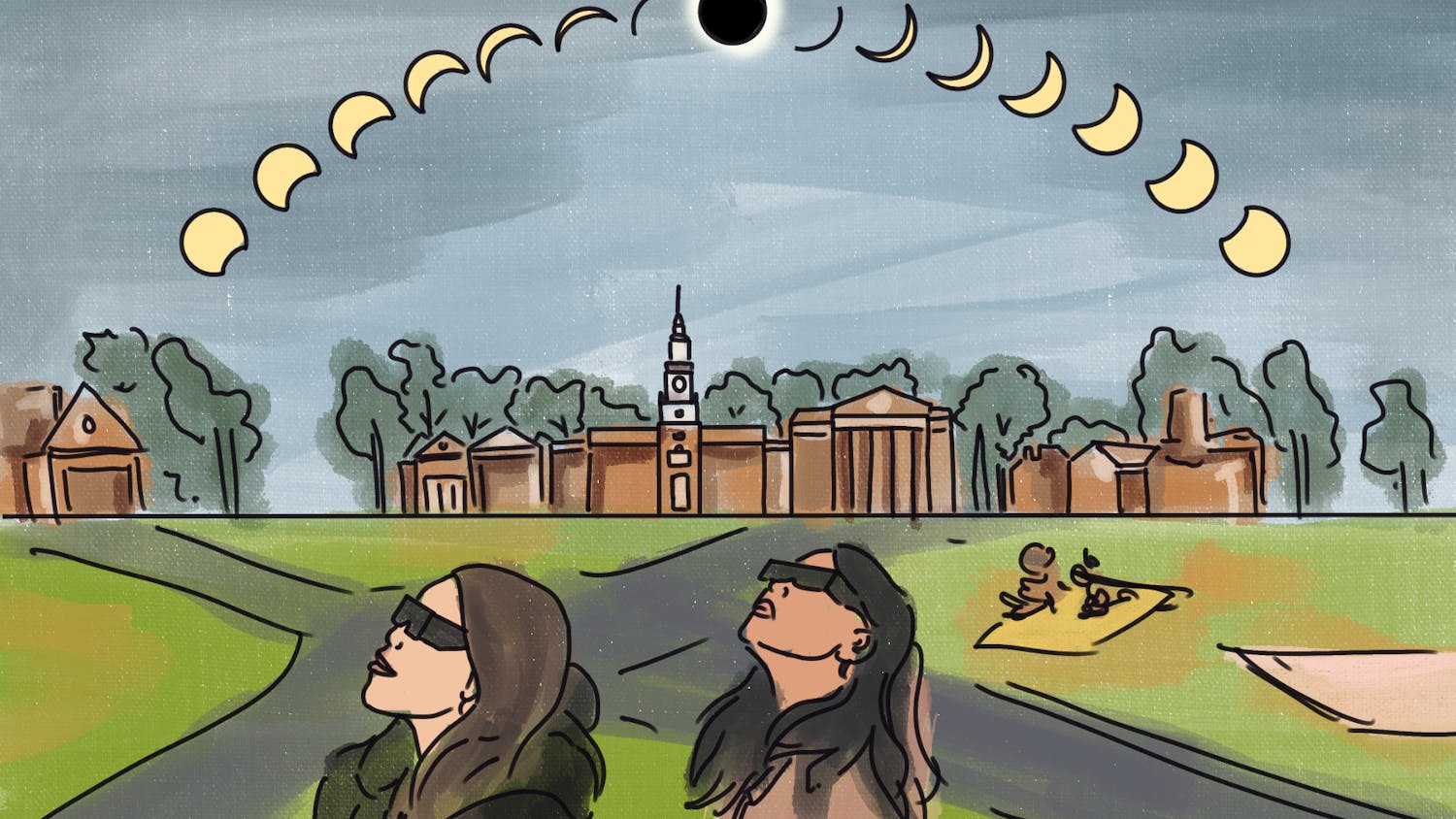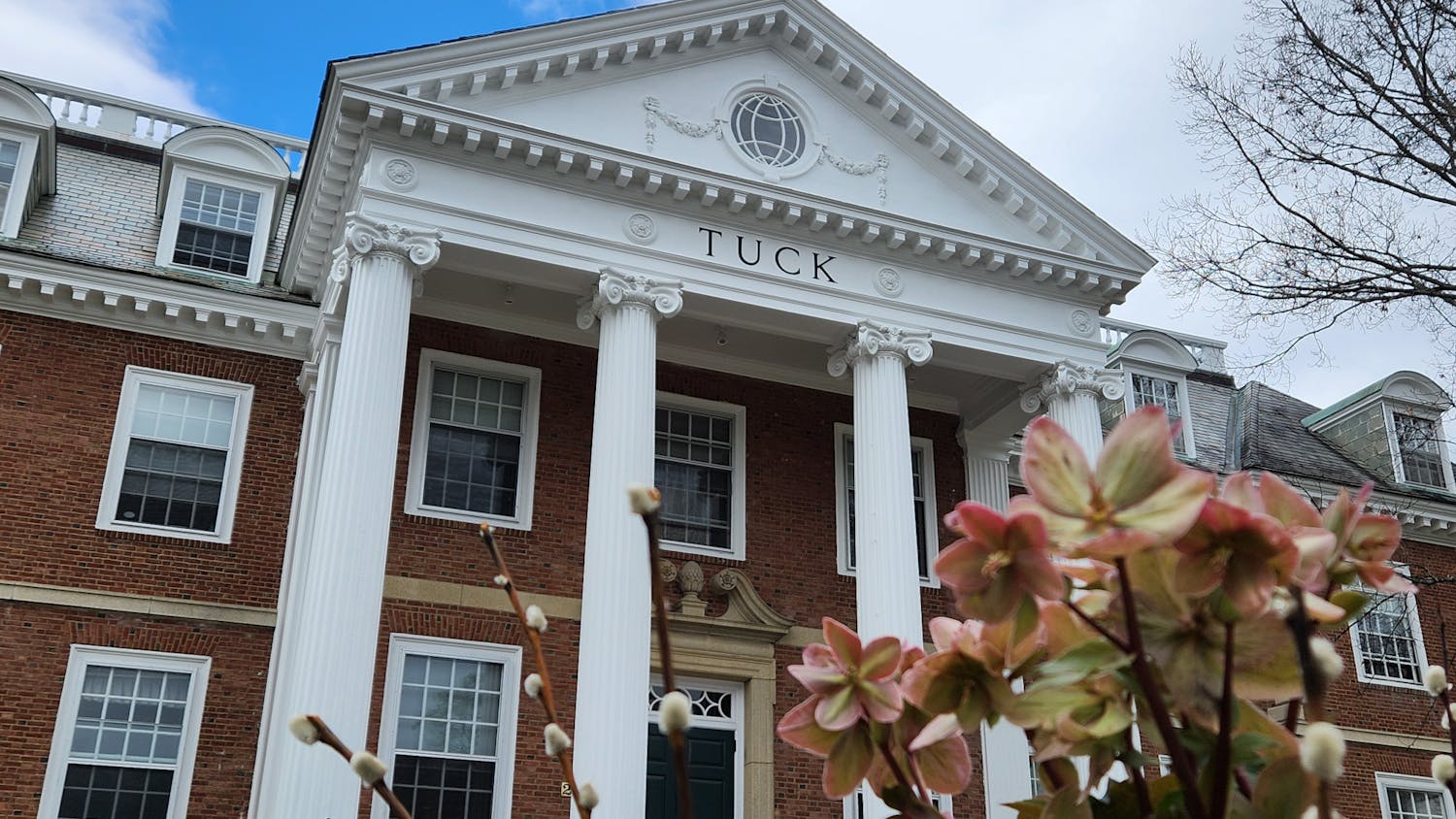“Just have a seat and someone will be with you shortly,” said the on-duty nurse at the front window, slipping me a small sheet of paper with my name and appointment time. The waiting room at Dick’s House is small, no larger than the two-room triple I called home last year. There are a handful of chairs and a tiny wooden bench crowded around one another. Next to me, a young woman leafed through a magazine. The entire room was quiet.
Nearly three hours before my first class, it was the earliest I had woken up in weeks. Groggy, I had stumbled out of my room, forgetting to put in my contacts. The writing on the pamphlets was too small and blurry for me to read. The only words I could make out were on the glossy poster that stared at me from across the room. It read, in giant letters, “20% of Americans with HIV don’t know they have it.”
This poster is part of what Dick’s House calls the “1 in 5” campaign, an ongoing initiative to raise awareness on campus around the issue of the human immunodeficiency virus, or HIV.
Similar notices are located all around campus. One flyer in Collis reads, “Soon everyone will know someone who doesn’t know they are infected with HIV.” This Winter Carnival, several members of the Dick’s House staff participated in the polar bear swim as part of the campaign to raise awareness about the disease. A recent issue of The Stall Street Journal also tackled the issue, encouraging students to “know their status” and promoting the availability of testing at Dick’s House.
This heightened consciousness may fall on deaf ears, however, as many students, unaware of any HIV-positive students, don’t consider the disease to be an issue on campus.
Students often hold the misconception that HIV only affects people outside of the Dartmouth bubble, anthropology department chair Sienna Craig said. In her work, Craig focuses on cross-cultural understanding of health and illness.
Students, she’s noticed, seem to believe that HIV doesn’t concern their lives or impact the lives of those around them.
“They approach HIV as it occurs ‘out there’ rather than ‘in here,’” Craig added.
The bridging of “out there” and “in here” was a primary topic of HIV/AIDS Through a Biosocial Lens: 30 Years of a Modern Plague, a class that Craig taught last spring. It was co-taught by Tim Lahey, an associate professor of medicine at the Geisel School of Medicine.
In interviews, both Craig and Lahey discussed the challenges that can come with addressing the issue of HIV in a rural community like the Upper Valley. The Dartmouth-Hitchcock Medical Center acts as a hub for HIV research and treatment in the area, providing care to patients from across the Northeast.
Lahey added that DHMC’s status as a tertiary care hospital makes it possible for the hospital to include a robust HIV prevention and treatment program with many expert providers.
“This isn’t true of most rural hospitals, and so for about a million people living in the New Hampshire, Vermont and other nearby states, we’re the only resource,” he added.
Access to medical treatment, however, isn’t the only concern for many HIV-positive patients. At times, HIV can be a debilitating disease that causes the people who live with it to experience economic hardship stemming from missing work and the high cost of treatment, which currently may involve taking several drugs.
DHMC directly addresses several of these issues. As Lahey explains, the hospital gives multifaceted support to those patients who are living with HIV. Beyond physicians, it provides case managers, psychologists, nutritionists and medical experts from various fields.
Still, living with the disease can be challenging to handle alone. The HIV/HCV Resource Center in Lebanon is a nonprofit organization that provides individual support for those whose lives are affected not only by HIV, but also by Hepatitis C, an infectious disease that spreads in the same way as HIV.
The resource center offers services like free HIV testing and a syringe exchange program through which clients can anonymously drop off used needles. For those who have been diagnosed, there is also a food bank and clothing drive that operates through donations. All of the services offered by the center are free, anonymous and completely confidential.
“No one should have to live in shame or secrecy because of their HIV status,” said Laura Byrne, the organization’s executive director. “We not only try to provide education and information, but also a sense of understanding.”
Simple understanding is important, as even the mention of HIV carries a powerful stigma. When I asked students which groups of people they believed were most affected by the HIV virus, the overwhelming response was gay males and intravenous drug users.
These stereotypes aren’t completely unfounded. AIDS, the disease caused by the HIV virus, was originally called GRID, which stood for gay-related immune deficiency. Many of the most prominent early cases of HIV and AIDS involved queer men. As my Dick’s House nurse Suzanne Stebenne explained, the thinner tissue of the anus allows for facilitated transfer of the virus. While the medical community has determined that HIV is not isolated to gay men, a strong association between HIV and the gay community continues to exist for those who are not educated about the disease.
Another widely recognized way of transferring the virus includes the sharing of needles, generally linked with intravenous drug use.
These stereotypes about who can contract HIV, however, are far from the truth. HIV can be transferred from mother to child, through blood transfusions or by occupational exposure for those working in the health care field. Nevertheless, the connotations of HIV and its relationship with the gay community and drug abuse have left many afraid to discuss the disease or seek help.
“The Upper Valley isn’t a terribly conservative part of the country, but it’s not the most diverse place, either,” Craig said. “It’s more difficult in some ways to get the support you might want, but also to remain anonymous in any attempts to do so.”
Lahey agreed, saying that in places like the Upper Valley, HIV can be unfamiliar to patients’ families and friends.
“There aren’t any hard and fast rules,” he said. “But I think the HIV stigma is definitely worse in rural areas.”
This stigma impacts not only the residents of the Upper Valley, but also students at Dartmouth. When writing this article, I tried endlessly, questioning over 15 students across campus, to find someone who would talk to me about getting tested for HIV. I soon realized it wasn’t a topic that most people were incredibly open about, and not one that I felt comfortable approaching strangers for, despite being a reporter.
Craig said teaching the class about HIV opened her eyes to the attitude that many students hold toward the disease. She was surprised and concerned, she said, to realize that many of the students taking her class had never been tested.
“There was a greater concern about sexual violence and unwanted pregnancy,” she said. “Issues with STIs and HIV in particular were not something students were thinking about.”
She went on to discuss this attitude as something that has grown “after the cocktail,” referring to the increased prominence and availability of HIV medication. Almost all the responses I received from students mirrored this lack of concern with HIV in today’s world.
That’s why I ended up at Dick’s House early one morning. If no one was going to talk about getting tested openly, I was going to have to go through with it myself.
When I entered the small, cold room with my nurse, I was suddenly nervous. I asked if I could buy something from the vending machine before we started. I’d skipped breakfast that morning and didn’t want to pass out when my blood was getting taken.
My nurse looked confused, standing there holding what seemed like a pregnancy test in her hand. HIV tests, it turns out, don’t require blood samples anymore.
She swished the white stick around my mouth and sat it in a cup on her desk. Then she explained how it would test for certain antibodies in my mouth. In 20 minutes I’d know whether I was HIV negative. The stick would let her know if there were a chance that I had HIV, in which case, I would need blood work.
“Students think it’s a long, drawn-out process to get tested for HIV,” she said. “It’s not at all. It’s completely free and takes less than 20 minutes.”
I sat there for a while longer, discussing HIV at Dartmouth with her, almost forgetting about the test that was only a few feet away from us. She reminded me multiple times that the testing is free for all students associated with Dartmouth, not just those on the school’s insurance. When I finished my questions, she informed me of my results. Before I had made it back to the library, I received a message from the nurse on Banner Student wishing me the best of luck with my research on HIV.
Despite the stigma that continues to exist around the discussion of HIV on this campus and beyond, there’s no argument that it is necessary to raise awareness of the disease. No matter your risk, know your status. HIV is not a thing of the past.



